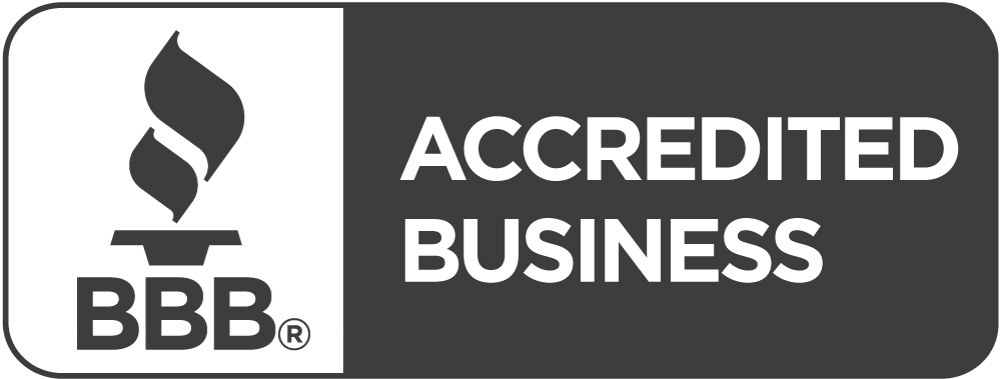Maintaining call center best practices is crucial to the success of your services. Read on for effective strategies that you can use today!

Creating, teaching, and maintaining call center best practices is crucial to the success and effectiveness of your customer service offerings. With the right strategies in place, you can train efficient and helpful agents and ensure a happy customer.
While call centers offer a variety of services, their most important role is helping callers find the information they need. So, how can call centers train their agents to be helpful? In this article, we’ll explore the importance of effective call center strategies and provide eight best practices to which every call center should aspire.
#1 Thorough, Standardized Training
Customer service-based careers require extensive familiarity with procedures, software competencies, and nurtured soft skills like problem-solving and effective communication. Standardized call center training ensures that call center staff embodies all of these traits and more.
After all, the key to providing helpful, effective sales call center services is making callers have a consistent and positive customer experience no matter who’s on the other end of the line.
High-performance workplaces that use tactics like total quality assurance management and agent performance reviews generally train employees extensively, and call centers are no exception. But, what does effective call center training look like?
Successful call centers implement all of the following in their initial training and continuing education or coaching sessions:
- Standardized curricula that are regularly audited by employees and the call center management
- Trainers with direct call center experience
- Training material databases for reference
- Useful assessments to track the call center agent’s training progress
Individual staff should proceed with each call according to the Standard Operating Procedures (SOPs), and consistent procedures require consistent training.
#2 Writing Standard Operating Procedures (SOPs)
Standard Operating Procedures (SOPs) are essentially Owner’s Manuals for common call center procedures, caller questions, and customer service practices. It is important to note that SOPs may differ for a contact center vs call center. The most critical element of SOPs might be obvious, but creating and maintaining standard employee procedures ensures that callers receive uniform services from any of the call center representatives.
You can use the following steps to create SOPs:
- Think of a procedure you need to standardize. As an example, let’s consider callers seeking a consultation with your business.
- Write out the procedure agents should follow to complete this caller request. Some procedures may only have a few steps, but you should balance efficient problem-solving with thoroughness. For instance, callers seeking a consultation should provide their contact information, their availability for an appointment, and any pertinent details about their project.
- Test the SOP. When creating or updating an SOP, provide a draft to an employee, watch them use it, and ask for their feedback. Since call center agents are the ones using the SOP, they should have a hand in creating and testing procedures.
SOPs should be audited and updated regularly by employees and the call center management.
#3 Creating a Centralized Knowledge Base
A centralized knowledge base is a cornerstone of call center quality assurance best practices. When you create a collection of critical resources, you ensure that center agents can supplement SOPs for the outbound and inbound call process at any time.
A useful, helpful centralized knowledge base includes:
- Customer information
– Business hours
– Contact information for key staff
– Description of services
– Forms and web links
- Scripts specific to each caller’s request
- Directories for call center specialists and management
- Training and continuing education materials
- Tech support manuals for phones, headsets, computers, and other equipment
- The call center’s Standard Operating Procedures (SOPs)
Any call center employee should be able to navigate and use the centralized knowledge base. Like SOPS, this resource should be audited regularly by employees and management. While it can’t be granular enough to answer every possible employee question, it should at least point them in the right direction to begin problem-solving.
Navigating the centralized knowledge base should be a substantial topic during employee training.
#4 Maintaining a Customer Inquiry Database
While call centers may choose to record calls for future access if needed, customer inquiry databases allow staff to quickly search for and find past callers’ information and their requests.
What’s the point of a customer inquiry database? If call centers collect inquiry information, they can track trending topics, report frequently-asked questions, and collect data for training or SOP auditing purposes.
Customer inquiry databases can be set up in a variety of ways, but one of the most effective methods for tracking caller activity is using a customer service ticketing system. A database of searchable caller tickets provides call center staff with a brief history of the caller, which can help them navigate the customer service process while on the line.
Call center agents can also leave notes about the caller for future reference. Some notes could include:
- A caller’s loyalty to a client
- A caller’s personal relationship with key staff
- Their preferred callback times and days
Collecting and maintaining resources like a customer inquiry database helps staff provide better services to callers.
#5 Continuing Education
While training immediately after hiring is crucial to staff success, maintaining up-to-date knowledge ensures that call center agents continue to provide excellent customer service, adapt to changing technologies, and take note of new SOPs or other procedural changes.
Call centers should offer regular opportunities for professional development and either require or incentivize attendance. Continuing education sessions can cover any relevant topic, but consider the following subjects:
- Recorded call case studies
- Customer profiles
- Recent changes to the customer inquiry database or centralized knowledge base
- Soft skills training with seminars or team-building activities
As training requirements change over time, call centers can use continuing education courses to update existing employees’ training and ensure uniform SOP adoption. Providing additional training opportunities after employees’ initial training keeps the information fresh, provides opportunities for employee questions and feedback, and facilitates networking among staff.
#6 Tracking Key Performance Indicators (KPIs)
Call centers can collect Key Performance Indicators (KPI) data to draw a variety of conclusions about employee success, training implementation, and SOPs.
While each call provides a wealth of data about callers, agents, resources, and procedures, call centers must first determine which call center KPI they’d like to measure and how these metrics indicate success or the need for improvement.
Inbound call center services providers could identify and track any of the following call center KPI data:
- Call duration
- Question or problem resolution
- For sales call centers, the rate of closed sales per call
- Average hold times
- Number of transfers to other call center staff or management
Collecting key data and analyzing trends can inform training curricula, changes to SOPs, and continuing education topics. For instance, if a call center discovers that their average call duration is 10 minutes, and they want to decrease that average, they could trim down SOPs, streamline a call procedure, or develop new training objectives.
KPIs also provide critical metrics to call center clients. With any of the above data, clients could determine how a call center is impacting their customer satisfaction, which frequently asked questions should be added to their website or marketing materials, and how customers respond to software updates, policy changes, or product modifications.
#7 Auditing Scripts Regularly
Scripts are tried-and-true, effective call center strategies that allow agents to answer customer questions quickly, provide client-approved advice, and embody a brand’s tone and vocabulary.
But, scripts are only successful when they remain up-to-date with caller trends, facilitate KPI goals, and lead to caller question resolution. The call center best practice includes the regular auditing of scripts. This is to ensure their effectiveness and identify necessary changes.
Call center clients should be involved in script auditing to any extent they wish. Ultimately, clients’ customers are callers, and a client’s success depends on how well call center agents can manage callers’ conflicts and questions.
Script auditing can include any of the following steps:
- Reviewing recorded calls to determine
– Script effectiveness
– Script usefulness for problem-solving
– Script alignment with SOPs
- Updating scripts to reflect a clients’ new or updated brand guidelines
- Condensing scripts to reduce average call times
- Altering scripts in response to caller feedback
Call centers should work with their clients to determine an optimal auditing schedule.
#8 Using Customer Surveys
Customer surveys are one of the most useful tools for both call center operation and client relations. Offer and collect customer surveys from:
- Call center clients
- Clients’ customers
This creates a bank of crucial feedback that can inform changes across the entire operations spectrum.
It can be difficult to convince callers to participate in surveys via phone. But, remember that surveys can provide crucial details about other support channels like SMS, live chat, and email. Collecting and compiling data for clients about all support channels will also help them decide which channels are useful enough to continue offering and which ones to scrap.
Customer surveys also provide call center clients with tangible feedback about call center performance and the agent performance. While not all customer feedback will be positive, call centers should hold themselves accountable to their clients’ standards and use constructive criticism to develop new customer service strategies
Call Center Best Practices in Action
Creating and maintaining call center best practices ensures that call center clients receive the best possible service, leading to improved call outcomes and customer relations.
If you’re looking for a call center with top-tier best practices implemented at every level, look no further than Nexa. We regularly update our practices in order to provide the 24/7 omnichannel support that our clients need to succeed.
From appointment-setting to troubleshooting, our agents are trained and ready to keep your customers coming back. At Nexa, we’re all about best practices in action.
Sources
- US Bureau of Labor Statistics. Survey of Employer-Provided Training. https://www.bls.gov/ept/eptfaq.htm
- US Cybersecurity and Infrastructure Security Agency. Standard Operating Procedures. https://www.cisa.gov/safecom/sops
- MIT Sloan Management Review. Five Categories to Focus Your KPIs. https://sloanreview.mit.edu/article/five-categories-to-focus-your-kpis/









































































